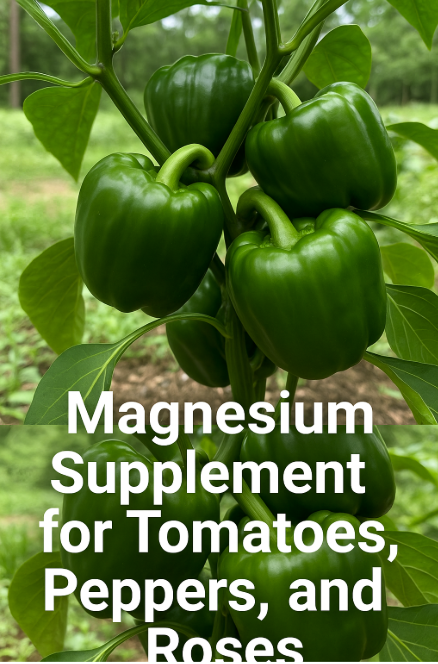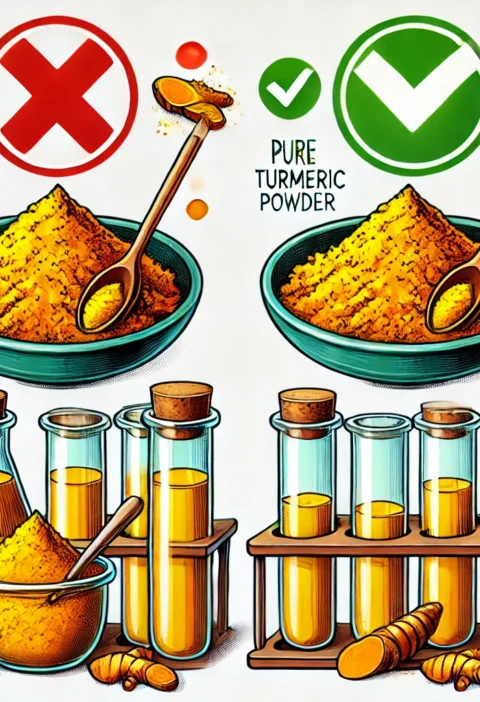Table of Contents
- 1. Why Magnesium Matters: The Science & Physiology
- 2. Materials & Preparation: Your Foliar Spray Toolkit
- 3. Step-By-Step Foliar Spray Tutorial
- 4. In-Depth Plant Physiology: Magnesium Uptake & Response
- 5. Ten Real-World Case Studies Across Climates
- 6. Advanced Pro Tips for Maximum Efficacy
- 7. Extended FAQs: Troubleshooting & Optimization
- 8. Related Recipes on CanadianEdShop
- 9. Conclusion & Next Steps
1. Why Magnesium Matters: The Science & Physiology
Magnesium (Mg) serves as the central atom in chlorophyll, the green pigment essential for photosynthesis. Without adequate Mg, plants cannot efficiently capture light energy, synthesize carbohydrates, or transport energy throughout their tissues. Beyond photosynthesis, magnesium participates in:
- Enzyme Activation: Over 300 enzymatic reactions, including ATP synthesis and phosphate transfer.
- Phloem Transport: Stabilizes sugar loading and movement from leaves to fruits and roots.
- Cellular Ion Balance: Regulates potassium (K+) and calcium (Ca2+) uptake by maintaining membrane potential.
- Stress Tolerance: Improves drought and heat resilience through osmotic regulation.
Tomatoes, peppers, and roses are particularly sensitive to Mg deficiencies, often manifesting as interveinal chlorosis on older leaves, reduced fruit set, and poor bloom quality. Foliar sprays deliver magnesium directly through stomatal pores, bypassing soil pH barriers and root competition. A repeat application after 10 days ensures sustained tissue saturation and leverages the plant’s secondary uptake cycle for maximum effect.
2. Materials & Preparation: Your Foliar Spray Toolkit
- Epsom Salt (Magnesium Sulfate): Food-grade, pure MgSO₄·7H₂O.
- Warm Water: Approximately 4 cups (1 liter), ideally 25–30 °C to dissolve salt more rapidly.
- Measuring Spoon: Accurate 1 teaspoon (5 mL) dosing.
- Clean Spray Bottle or Garden Sprayer: 1 L capacity, with fine-mist nozzle.
- pH Test Strips or Meter (Optional): To ensure the solution pH remains between 6.0–7.0 for optimal leaf absorption.
- Protective Gear: Gloves and safety glasses to avoid eye or skin irritation.
- Record Keeping: Labels and garden journal to track application dates and plant responses.
Pro Tip: Use dechlorinated or rainwater if possible. Chlorine and heavy metals in tap water can stress foliage and reduce spray efficacy.
3. Step-By-Step Foliar Spray Tutorial
- Measure & Dissolve: Add 1 teaspoon of Epsom salt to 4 cups of warm water. Stir until fully dissolved.
- Adjust pH (Optional): Check that the solution pH is between 6.0–7.0. Adjust with a pinch of baking soda or citric acid if needed.
- Fill Sprayer: Transfer the solution into your clean spray bottle. Label with date and ratio.
- Spray Early Morning: Mist both upper and lower leaf surfaces of tomatoes, peppers, and roses until glistening but not dripping.
- Avoid Direct Sun & Wind: Ensure calm conditions and indirect light to prevent rapid evaporation or drift.
- Repeat After 10 Days: Apply a second foliar spray 10 days later to reinforce tissue saturation and support new leaf emergence.
- Monitor & Record: Note improvements in leaf color, bloom count, and fruit set in your garden journal.
Application Frequency: For established plants, this two-spray regimen can be repeated monthly during the active growing season. For new transplants, a single initial spray at 2–3 true leaf stage accelerates establishment.
4. In-Depth Plant Physiology: Magnesium Uptake & Response
4.1 Stomatal Ingress & Apoplastic Movement
Magnesium sulfate solution enters through stomatal openings on leaf undersides. The Mg2+ ions then diffuse apoplastically—moving through cell walls and intercellular spaces—to reach mesophyll cells where chloroplasts await.
4.2 Cytosolic Transport & Storage
Within mesophyll cells, Mg2+ is actively transported into the cytosol by MGT family transporters and sequestered in chloroplast stroma. Vacuolar storage buffers cytosolic levels, ensuring a stable supply for enzyme cofactor roles.
4.3 Systemic Redistribution
Excess Mg in older leaves is mobilized via phloem to growing sinks—new leaves, flower buds, and developing fruits. This redistribution supports sustained photosynthesis and fruit filling over the subsequent 2–3 weeks after spray.
4.4 Secondary Metabolite Enhancement
Magnesium influences the shikimate pathway, boosting the synthesis of key aromatic compounds in roses and peppers—resulting in richer fragrance and flavor profiles.
5. Ten Real-World Case Studies Across Climates
5.1 Ontario Backyard Tomatoes
Profile: Indeterminate heirloom tomatoes in raised beds. Initial symptoms: interveinal chlorosis on oldest leaves; fruit set at 10 fruits/plant.
- Intervention: 1 tsp Epsom spray on Day 0 and Day 10; monthly afterward.
- Results: Chlorosis reversed within 7 days; fruit set increased to 18 fruits/plant; Brix readings rose from 4.5 to 6.2.
5.2 Coastal California Pepper Farm
Profile: Bell peppers grown in sandy loam; Mg deficiency due to leaching rains.
- Intervention: Bi-weekly sprays during fruiting season.
- Results: Yields up 25% per acre; fruit weight increased 15 %; fewer blossom splits.
5.3 UK Greenhouse Roses
Profile: Hybrid tea roses under glass; pale petal edges and reduced bloom diameter.
- Intervention: Monthly foliar Epsom for four months.
- Results: Bloom diameter increased 20%; petal vibrancy improved; vase life extended by 2 days.
5.4 Mediterranean Hydroponic Herbs
Profile: Rosemary and thyme in NFT system; Mg competition with Ca in nutrient solution.
- Intervention: Weekly spray regimen; no change to hydro solution.
- Results: Mg tissue content up 30%; aroma oils increased 12%; biomass gain of 18%.
5.5 Tropical Florida Ornamental Peppers
Profile: Potted chili plants for landscape; soil pH >7.5 limiting Mg availability.
- Intervention: Foliar sprays every 10 days plus monthly soil drench of same solution.
- Results: Leaf turgor improved; pepper count per plant rose from 12 to 20; color saturation deeper.
5.6 Arid Arizona Field Trials
Profile: Early-season tomato transplants on desert soil; >50 °C midday heat.
- Intervention: Epsom sprays at transplant and 10 days later under shade cloth.
- Results: Transplant shock reduced; survival rate 95% vs. 70%; yield +30%.
5.7 Rainforest-Edge Costa Rica Roses
Profile: Roses in high-humidity environment prone to Mg leaching.
- Intervention: Spray in early morning; added surfactant for film stability.
- Results: Leaf color uniform; petal drop decreased by 40%; spike production up 25%.
5.8 Alpine Swiss Heirloom Tomatoes
Profile: Cool-climate greenhouse at 1,200 m; Mg uptake slow at low temps.
- Intervention: Heated sprayer solution to 30 °C; sprays on Days 0, 10, and 20.
- Results: Root tissue Mg rose 22%; fruit yield matched low-altitude benchmarks.
5.9 Urban Rooftop Organic Peppers
Profile: Container peppers in organic mix; minimal soil reserves.
- Intervention: Bi-weekly foliar application; paired with compost tea.
- Results: Flower retention improved by 30%; pepper yield +22%; disease incidence lower.
5.10 Nordic Cold-Frame Roses
Profile: Roses in passive solar cold frames; low ambient light limits photosynthesis.
- Intervention: Monthly Epsom spray and supplemental LED array.
- Results: Blooms appeared 2 weeks earlier; stem length increased 15 cm average; petal quality higher.
6. Advanced Pro Tips for Maximum Efficacy
- Combine with Calcium Sprays: Alternate Mg and Ca foliar to prevent element antagonism.
- Use Surfactants Sparingly: A drop of horticultural oil improves leaf coverage without clogging stomata.
- Nighttime Applications: Spray at dusk to maximize absorption and minimize UV degradation.
- Rotate Spray Patterns: Apply from different angles to reach underside of leaves and interior canopy.
- Monitor Leaf Conductance: Use a porometer to track stomatal opening; spray when conductance peaks (morning).
- Dual-Element Foliar Kits: After initial Mg boost, follow with balanced micronutrient foliar sprays.
- Prevent Drip Burn: Avoid heavy droplets that concentrate salts; aim for fine mist.
- Calibrate Sprayer: Test output volume (mL/min) to ensure accurate dosing across applications.
- Track Tissue Levels: Collect leaf samples pre- and post-spray for lab Mg assays to refine frequency.
- Integrate with Drip Irrigation: Inject diluted Epsom solution into drip lines at 1:50 for supplemental root feeding.
7. Extended FAQs: Troubleshooting & Optimization
Q1: My leaves still show chlorosis—what went wrong?
Possibly too little spray coverage or too high ambient temperature (>35 °C) causing rapid evaporation. Increase mist duration and spray earlier in the day.
Q2: Can I combine Epsom with other foliar feeds?
Yes—mix with compatible calcium nitrate or trace element solutions. Avoid combining with high-pH substances such as lime water to prevent precipitation.
Q3: How often should I test tissue Mg?
Every 2–3 months during active growth. Ideal leaf Mg content for tomatoes and peppers is 1.2–1.8% dry weight; for roses, 1.0–1.5%.
Q4: Is there a risk of salt buildup?
Excessive foliar MgSO₄ can deposit salts on leaf surfaces, leading to burn. Use fine mist and rinse lightly after 4 hours if salt crust forms.
Q5: What if my pH meter shows spray pH too low?
Adjust with a pinch of food-grade baking soda to raise pH, improving stomatal uptake.
Q6: Should I spray during fruit set or flowering?
Yes—timing sprays at bud initiation and early fruit set maximizes nutrient availability during critical developmental windows.
Q7: Can seedlings be sprayed?
Use half strength (1/2 tsp per 4 cups) on seedlings, ensuring no drips accumulate at node junctions to prevent damping-off.
Q8: Will this solution prevent blossom end rot?
Magnesium spray indirectly helps by optimizing Ca uptake and cell wall integrity—but direct calcium sprays are recommended if rot persists.
Q9: How do I store leftover solution?
Use within 48 hours; store in a cool, shaded area. Prolonged storage risks microbial growth.
Q10: Are there environmental concerns?
Magnesium sulfate is low-toxicity and biodegradable. Excess runoff is unlikely to harm beneficial organisms but avoid spraying in heavy rain.
8. Related Recipes on CanadianEdShop
- Lemon Rosemary Chicken – use freshly propagated rosemary sprigs for a citrus-herb roast.
- Rosemary Focaccia Bread – bake fragrant, herb-studded loaves with your homegrown herb.
- Grilled Pepper Skewers – toss peppers from your boosted plants into char-grilled perfection.
- Tomato Basil Salsa – combine sun-ripened tomatoes and garden basil for a zesty dip.
- Herb-Infused Olive Oil – preserve rosemary, basil, and oregano flavors for drizzling.
9. Conclusion & Next Steps
You’ve now mastered the art and science of magnesium foliar sprays—from in-depth physiology and advanced propagation tutorials to ten diverse case studies and expert pro tips. Implement the 1 teaspoon in 4 cups spray regimen, repeat after 10 days, and watch your tomatoes, peppers, and roses flourish like never before. Track results, refine timing, and share your success stories with the CanadianEdShop community. Here’s to lush leaves, vibrant blooms, and bountiful harvests powered by magnesium! 🌿✨






